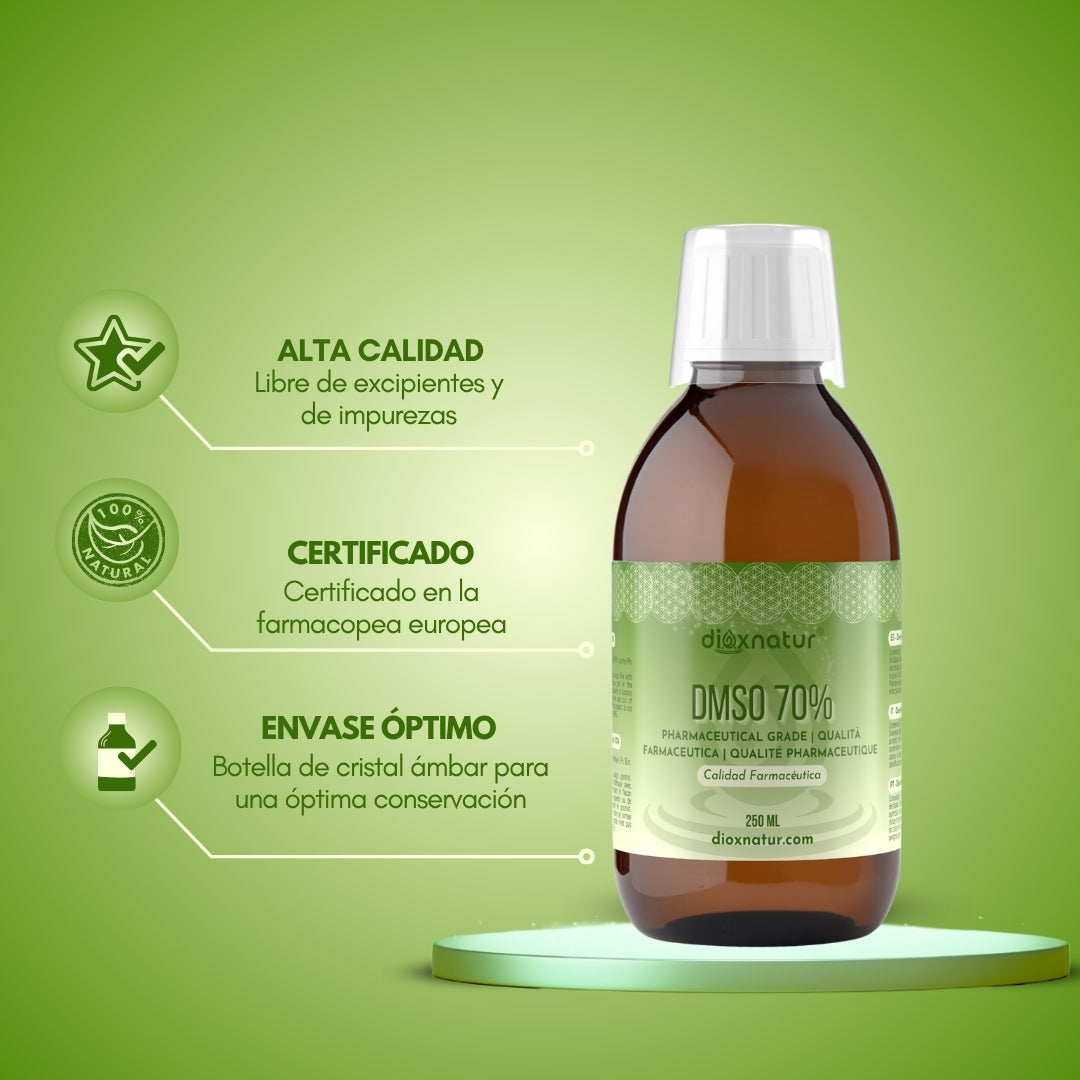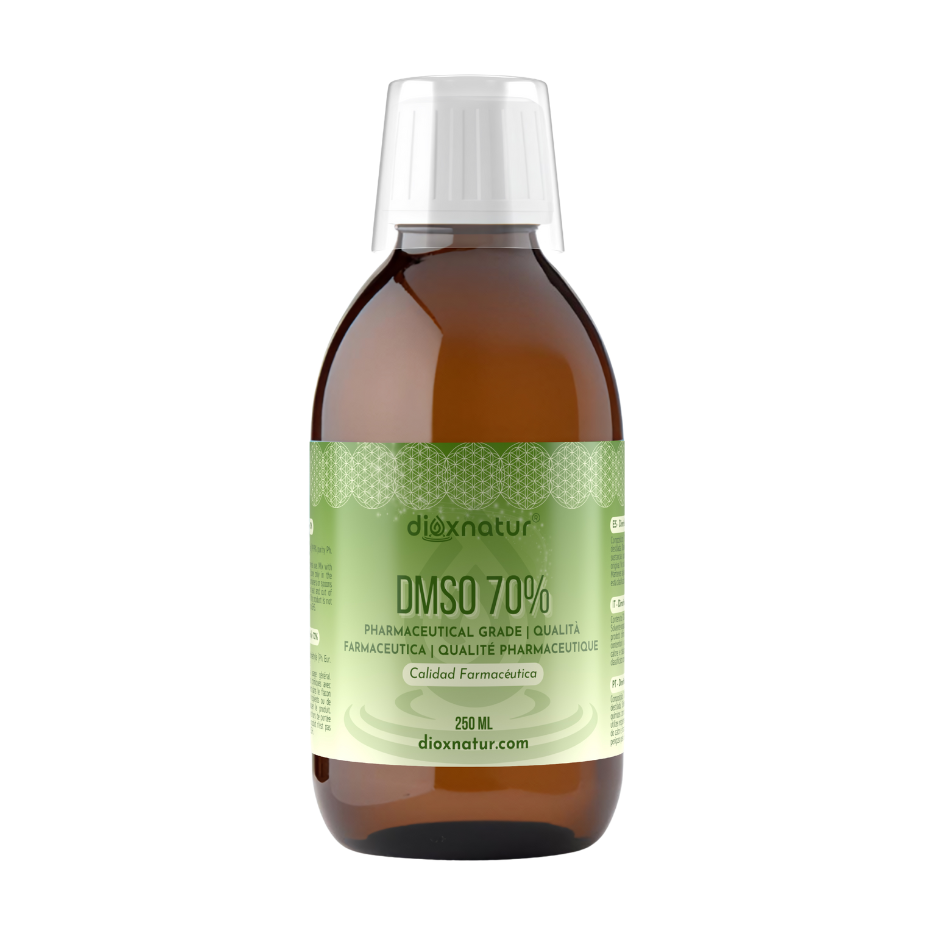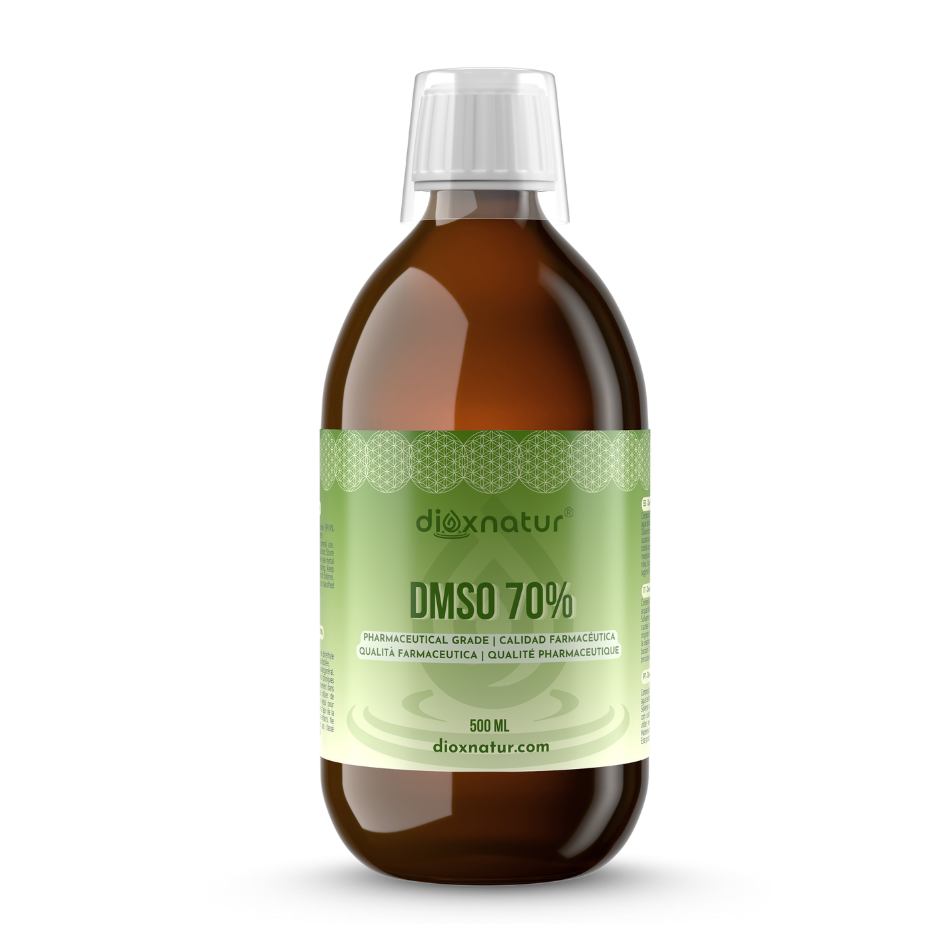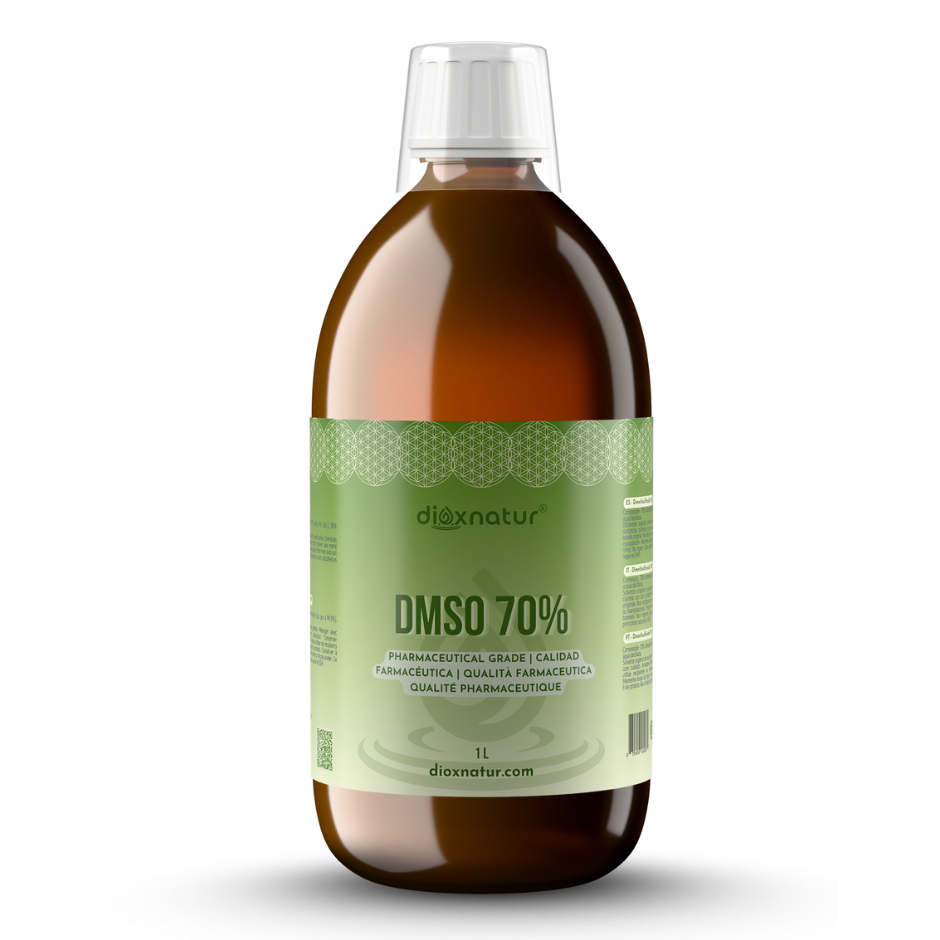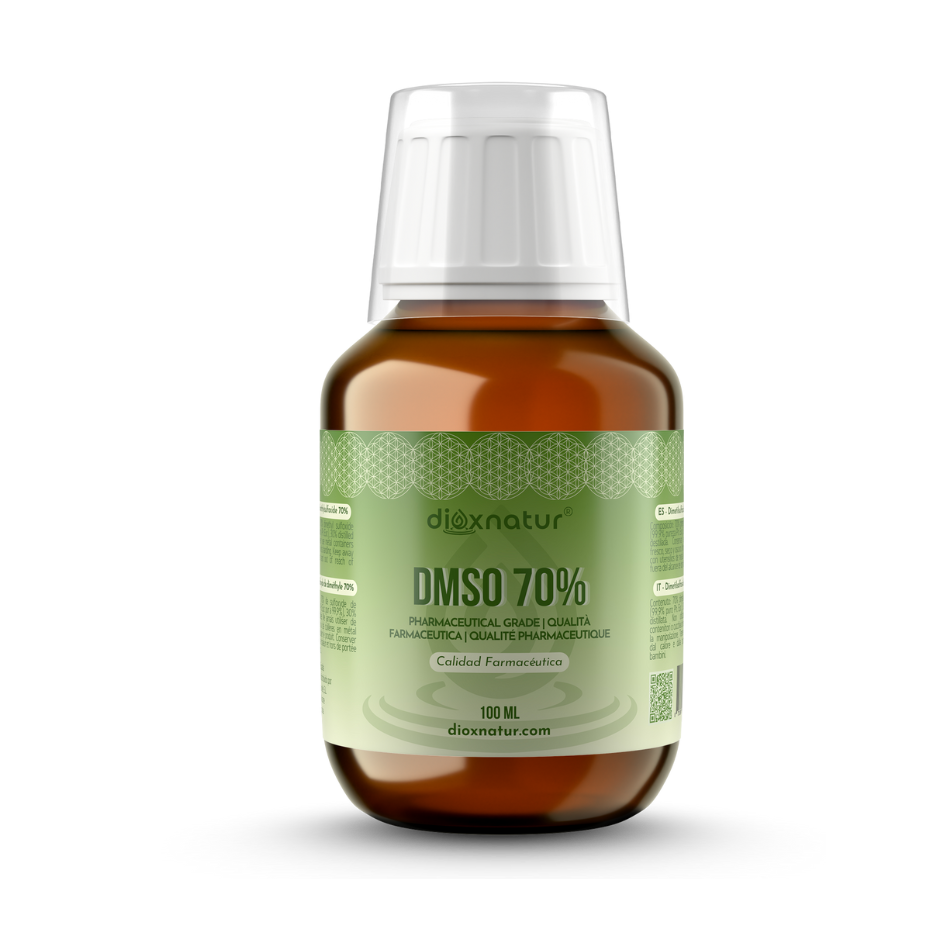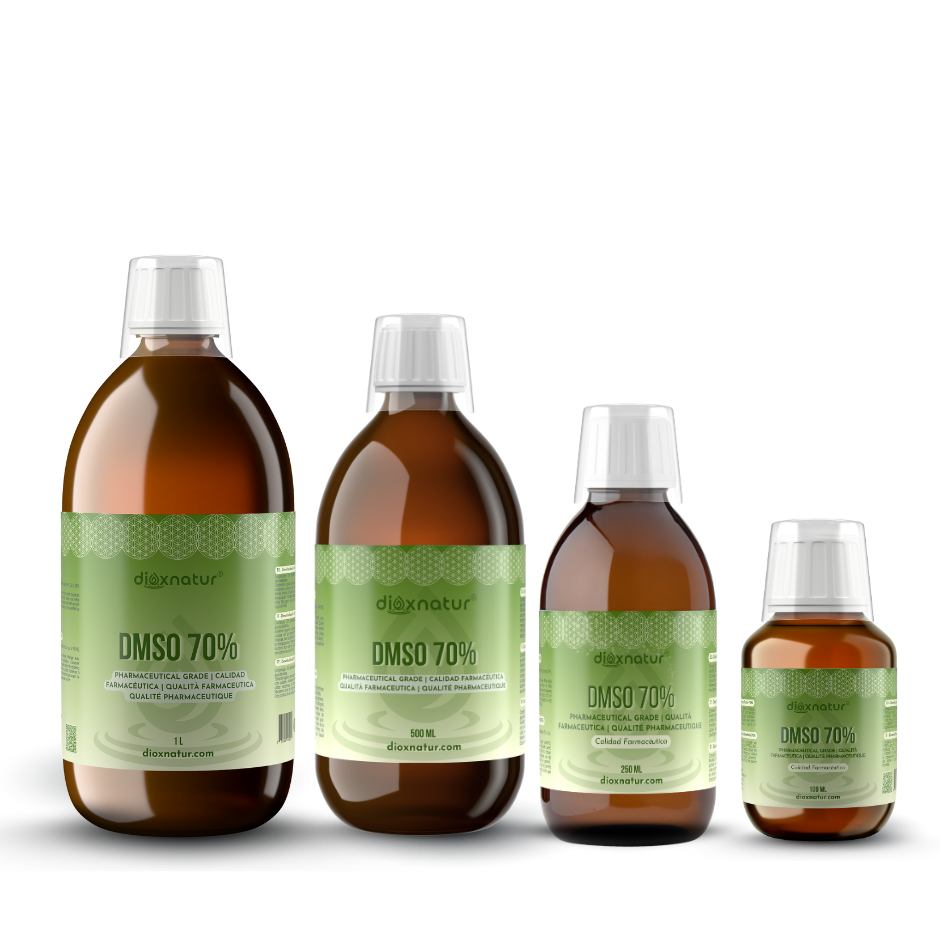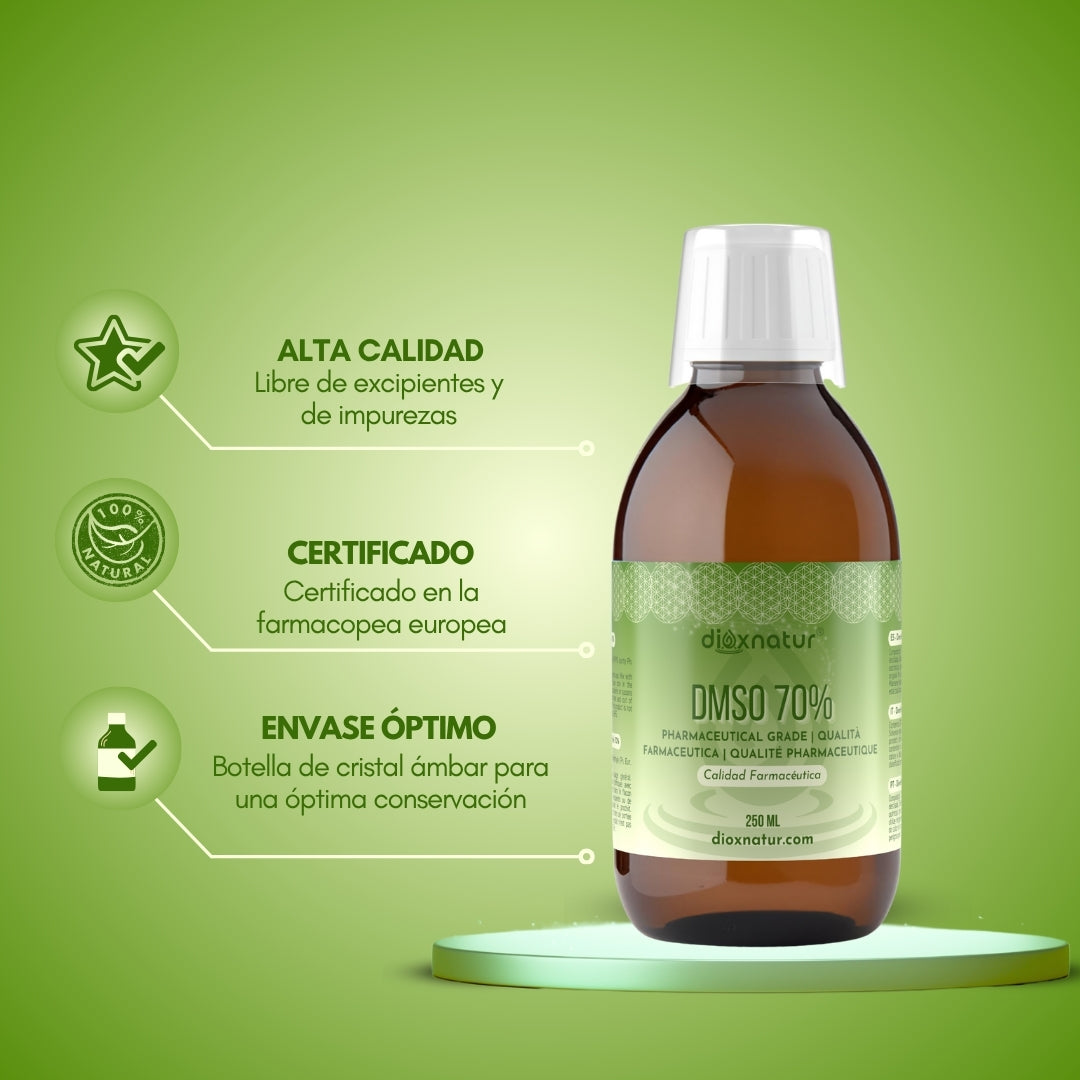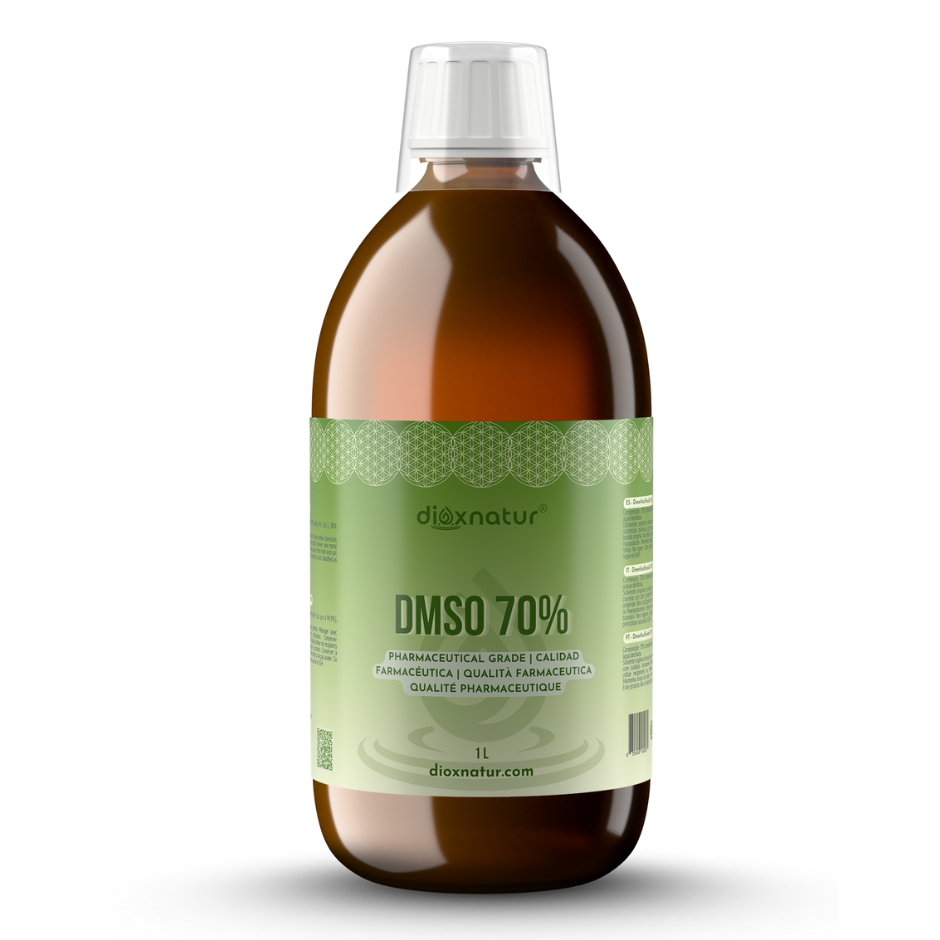Dimethyl sulfoxide, commonly known as DMSO , originates as a byproduct of the paper manufacturing industry derived from pine wood pulp. It was first isolated in the second half of the 19th century by a Russian-born chemist.
Although it has been the subject of decades of research and has a long and controversial history, dimethyl sulfoxide (DMSO) remains virtually unknown to health professionals and the general population.
What is DMSO used for?
DMSO displays exceptional versatility, being one of the few compounds that can be administered orally, topically, and even by injection into veins and muscles. The results of countless studies supporting its health-giving properties strongly affirm DMSO as a highly important therapeutic anti-inflammatory that holds promise for treating a variety of conditions.
- Arthritis : With its ability to penetrate tissue, DMSO may reduce pain and inflammation in osteoarthritis, rheumatoid arthritis, and possibly even gout.
- Atherosclerosis : In laboratory tests, DMSO has demonstrated its ability to slow the progression of atherosclerosis (narrowing of the arteries) caused by cholesterol. It also inhibits the accumulation of cholesterol in tissues, even when levels are considerably high.
- Drug Extravasation Injury – Extravasation refers to the escape of a drug into the extravascular space (soft tissue), either by leakage from a vessel or by direct infiltration. When chemotherapy drugs leak into surrounding tissues (extravasation) the effects can be potentially harmful. Numerous studies have shown that the application of DMSO has significantly improved tissue injury caused by extravasation in affected patients.
- Herpes : DMSO has been used to enhance the penetration of herpes skin treatment.
- Interstitial cystitis : Instillation of DMSO into the urinary bladder is an FDA-approved analgesic treatment for this chronic inflammatory condition.
- Reflex sympathetic dystrophy : DMSO may help alleviate the pain associated with this condition, which is a disorder of the autonomic nervous system characterized primarily by an overwhelming sensation of pain in the extremities.
- Scleroderma (hardening of the skin) : In basic work done at the Cleveland Clinic, topical DMSO was found to have an anti-inflammatory effect while increasing blood supply to the skin.
- Strains and sprains : Topical application of DMSO may offer rapid pain relief and significantly improve mobility. By passing through the fatty membranes of the skin, it reduces swelling and inflammation almost immediately.
Keloids, scars, burns, bruises: A 70% concentration applied two or three times a day may flatten a raised scar after several months. It offers significant value in the treatment of superficial burns and applied quickly to an injury has the ability to eliminate any bruising.
Why is DMSO so effective?
Sulfur compounds are essential and present in all cells of the body. They play an indispensable role in various chemical reactions related to the detoxification of the body. As a source of sulfur, DMSO contributes to the elimination of heavy metals . Sulfur binds to toxic metals such as mercury, lead, aluminum, cadmium, arsenic and nickel, facilitating their excretion through urine, defecation and sweating. DMSO also protects cells against mechanical damage , being necessary in considerably smaller quantities compared to many other drugs. This mechanism is crucial, since some molecules in our body generate an unequal amount of electrons, and this instability can lead to the destruction of other cells. DMSO binds to these molecules, thus facilitating their expulsion from the body. In addition, DMSO acts as an efficient analgesic by blocking the nerve conduction fibers responsible for pain, reducing inflammation and swelling by eliminating inflammatory chemicals.
DMSO also has a calming effect on the central nervous system and extends to all areas of the body when absorbed through the skin, including the brain. In other words, applying DMSO to one area of the body often results in pain relief in another area due to its systemic effect. DMSO’s ability to effortlessly penetrate the skin and blood-brain barrier makes it easier for it to reach tissues and enter the bloodstream. It also improves blood supply to injured areas by dilating blood vessels, increasing oxygen delivery, and reducing the viscosity of blood platelets. DMSO also stimulates the immune system , increasing the production of white blood cells and macrophages, which are responsible for destroying foreign materials and pathogens in the body. It also has antibacterial, antiviral, and antifungal properties. Among sulfur compounds, DMSO possibly stands out as the one with the widest range and the greatest number of therapeutic applications , surpassing any other chemical demonstrated to date. Its ability to stimulate healing is key to its usefulness in a variety of conditions. It is also among the most potent free radical scavengers known to mankind, even being considered the most potent.
How to use DMSO
DMSO is usually applied to the skin . It can be administered orally, but is only recommended for more intense internal detoxification and should be done under the supervision of a health care professional.
Important points about DMSO:
DMSO is highly susceptible to temperature variations. Liquid DMSO (99%) can and will crystallize in a cold environment. If this happens, place or hold the bottle of DMSO in a warm place (15°C to 20°C) and it should return to its liquid form within a few hours. For faster results, place it in a double boiler. Do not, under any circumstances, put it in the microwave! When using DMSO, make sure to always keep your hands and skin clean. DMSO is a powerful pain reliever and carrier. If your hands or skin have dirt or other debris on them, DMSO can carry it into the deeper tissues causing possible irritation or discomfort. If using DMSO after a shower, it is advisable to wait 30 minutes to an hour, as the skin pores are more open, which increases the absorption of DMSO and can cause irritation or discomfort. It is important not to cover the areas where you apply DMSO; it should be allowed to air dry. When you first start using DMSO, test it with a small amount before gradually increasing the dosage. It is worth mentioning that DMSO has a distinctive sulfur and garlic smell. When you apply it, you may experience a garlicky taste in your mouth. This is normal.






